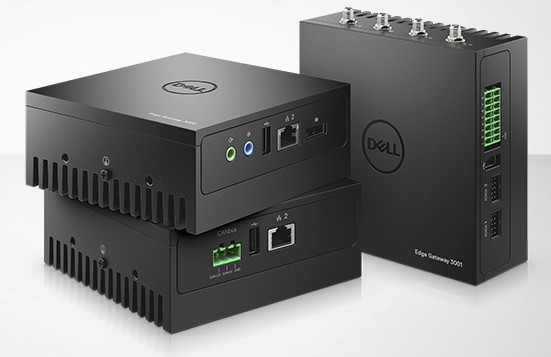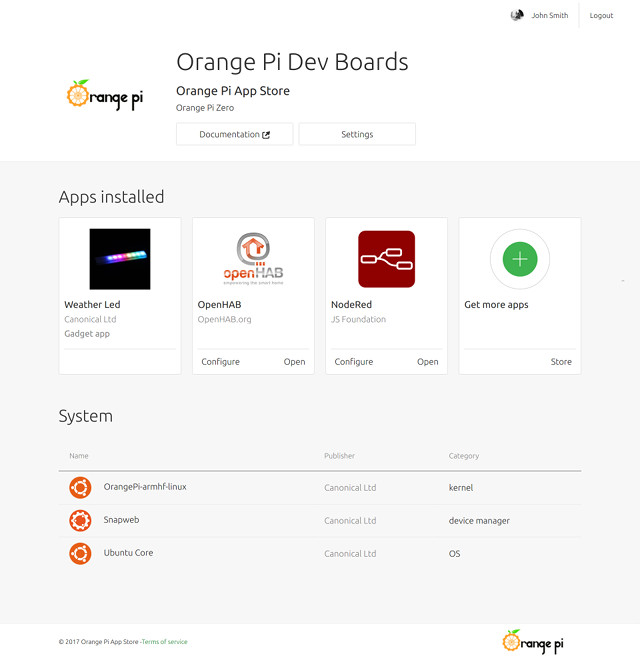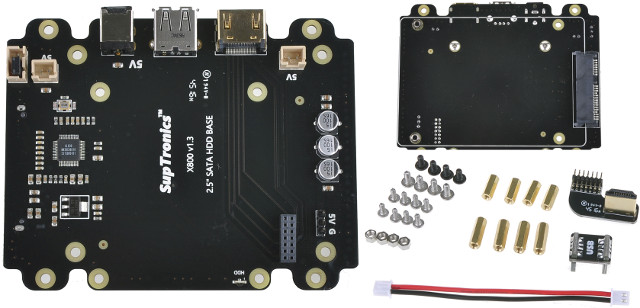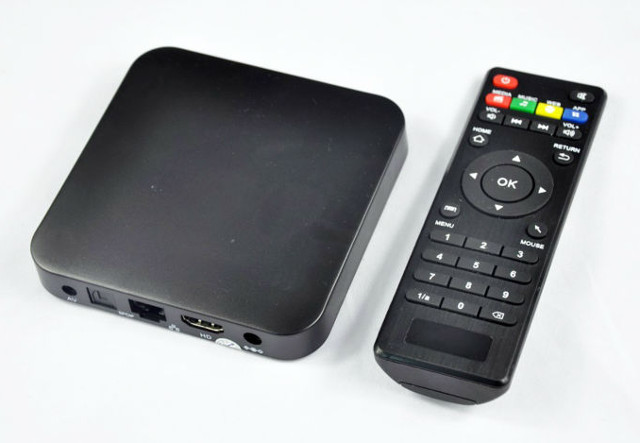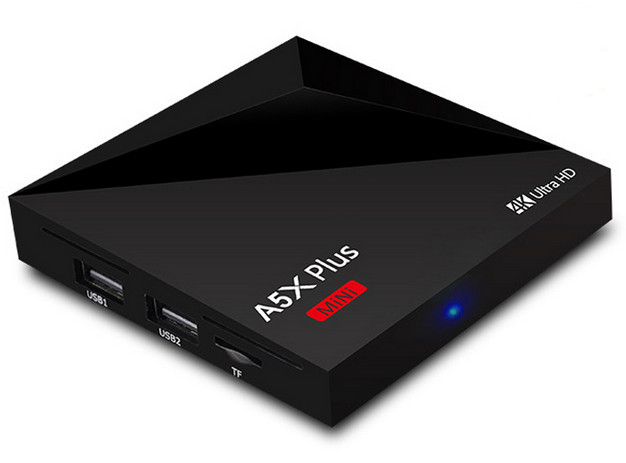Dell has recently introduced Edge Gateway 3000 series with three models powered by Intel Bay Trail-I processor, running Ubuntu Core 16 or Windows 10 IoT, with each model targeting respectively general-purpose automation, transportation & logistics, and digital signage and retail. The specifications for the three models can be found in the table below. Dell Edge Gateway 3001 Model for General-Purpose Automation Dell Edge Gateway 3002 Model for Transportation & Logistics Dell Edge Gateway 3003 Model for Media & Retail Kiosks SoC Intel Atom E3805 dual core processor @ 1.33 GHz (3W TDP) Intel Atom E3815 single core processor @ 1.46 GHz with GPU @ 400 MHz (5W TDP) System Memory 2 GB DDR3L-1066 Storage 8 or 32 GB eMMC flash Industrial-grade Micro-SD card: 8GB / 16GB / 32 GB / 64 GB Connectivity 1 x 10/100 Fast Ethernet (RJ-45) with PoE (15.4W) WiFi 802.11 b/g/n Bluetooth 4.0 LE Optional ZigBee […]
Google Releases Guetzli Open Source JPEG Encoder Generating 20 to 35% Smaller Files Compared to Libjpeg
Google has been working one several front to make data and images smaller, hence faster to load from the Internet, with project such as Zopfli algorithm producing smalled PNG & gzip files, or WebP image compression algorithm that provides better lossless compression compare to PNG, and better lossy compression compared to JPEG, but requires updated support from clients such as web browsers. Google has now released Guetzli algorithm that improve on the latter, as it can create JPEG files that are 20 to 35% smaller compared to libjpeg with similar quality, and still compatible with the JPEG format. The image above shows a close up on a phone line with the original picture, the JPEG picture compressed with libjpeg with the artifacts around the line, and a smaller JPEG picture compressed with Guetzli with less artifacts. You can find out more about the algorithm in the paper entitled “Guetzli: Perceptually […]
Shenzhen Xunlong Software & Canonical Launch Orange Pi App Store for Ubuntu Snaps
The maker of Orange Pi boards, Shenzhen Xunlong Software, has partnered with Canonical to launch Orange Pi app store, allowing developers to gain a simple mechanism to share their applications, projects and scripts with the Orange Pi community. The store relies on snaps instead of deb packages, with snaps allowing a secure distributions of apps bundled with all their dependencies, which according to Canonical can decreased the time for an half an hour installation process to just a few seconds. The community has already contributed hundreds of snaps in the Ubuntu snap store, including openHAB for home automation, Rocket.chat self-hosted chat platform, NextCloud for cloud storage, and wifi-ap for networking. You can get them from the App store, but installing a snap from the command line is easy, for example:
|
1 |
sudo snap install rocketchat-server |
However, I cannot find any Ubuntu Core image for Orange Pi Boards yet on Ubuntu Core Getting Started page. […]
How to Reinstall Android Firmware on Realtek RTD1295 TV Boxes
I started playing with Beelink SEA I TV box nearly two weeks ago, but I soon realized there was a big problem, while I could get an IP address with both Ethernet or WiFi, I could not access Internet, nor the local network with the box, and even ping would not work. So I contact Beelink to find a solution, and they believed I may have a problem with the firmware on my box, and recommended to re-flash it. Great. I asked the firmware, and the company eventually provided me with two files: SEAI_101M0_32G_20170225.img (password: 879y) SEAI_101M0_16G_20170225.img (password: 2js2) Those are baidu link which may be slow to download outside of China, so the company also provided a mirror later. The customer representative told me those were “Lines brushes Pack” firmware, and after lots of email back and forth. I finally got proper instructions which should work for Beelink SEA […]
SupTronics X800 2.5″ SATA Drive Expansion Board and Cases for Raspberry Pi 2/3 and ODROID C2 Boards
I wrote about SupTronics expansion boards for Raspberry Pi a few year ago. Those add features like WiFi, Bluetooth, RTC, SATA, VGA, S/PDIF, etc… I’ve just stumble upon a new model Suptronics X800 specifically designed for 2.5″ SATA hard drive and SSDs that I found on DealExtreme for $32.73 with a 5V/4A power supply, or $21.43 with just the expansion board and accessories. SupTronics X800 board features: SATA connector for 2.5″ SATA drivers up to 1TB implemented via GL830 USB to SATA bridge HDMI port – Duplicate Raspberry Pi HDMI output USB – Connects to Raspberry Pi Power Supply 5V via 5.5/2.5 power jack Optional & recommended power supply – AC 100 – 240V input ~50 / 60Hz, 5V/4A output with US and EU snap plugs Powers the Raspberry Pi, i.e. a USB power supply is not needed Dimensions – 109mm x 85mm Compatibility – Raspberry Pi Model B+, […]
ACEMAX Sells Amlogic S905X TV Boxes with LibreELEC, or Dual Boot LibreELEC + Android 6.0
There are plenty of Android TV boxes powered by Amlogic S905X processor on the market, but ACEMAX has apparently decided to leverage the community’s work on LibreELEC, and launched two “ACEMAX LE” models with 1GB RAM/8GB flash or 2GB/16GB that runs LibreELEC sold on Aliexpress for respectively $39.99 and $57.99 shipped. You can also buy the second model with a dual boot Android 6.0 + LibreELEC firmware for $59.99 including shipping, instead of only running LibreELEC. The company uses both “OpenELEC”, “LibreELEC” and “Pure Linux”, but the video demo embedded at the end of this post shows clearly the box booting LibreELEC 7 with Kodi 16.1. ACEMAX LE TV box specifications: SoC – Amlogic S905X quad core ARM Cortex-A53 @ up to 1.5GHz with penta-core Mali-450MP GPU System Memory – Model 1: 1GB RAM; model 2: 2GB RAM Storage Model 1: 8GB eMMC flash + micro SD card slot Model […]
MYiR Tech MYC-JA5D2X System-on-Module is Powered by Microchip ATSAMA5D2 Cortex A5 Processor
MYIR Tech has released MYC-JA5D2X system-on-module powered by a Microchip Atmel SAMA5D2 ARM Cortex A5 processor with 256MB flash, and 256 MB DDR3. The module relies on a SO-DIMM edge connector to expose the camera interface, Ethernet, USB, camera, and other I/O signals. MYC-JA5D2X CPU module specifications: SoC – Atmel SAMA5D26 or SAMA5D27 ARM Cortex A5 processor @ up to 500 MHz with 128KB L2 cache System Memory – 256MB DDR3 SDRAM Storage – 256MB NAND flash, 4MB data flash, 64KB EEPROM Connectivity – On-board 10/100M Ethernet PHY 200-pin SO-DIMM edge connector with: 1x Ethernet 1x USB Host, 1x USB Device, 1x USB HSIC (HSIC is only for SAMA5D27) Up to 10x serial ports, up to 2 x CAN (only for SAMA5D27) Up to 7 x I2C, up to 7 x SPI Up to 2 x QSPI 12 x 12-bit ADC (enhanced resolution up to 14 bits) 4x PWM 1x […]
$44 A5X Plus Mini TV Box Runs Android 7.1 on Rockchip RK3328 Processor
Rockchip introduced RK3328 processor for TV boxes at CES 2017. The processor is based on a quad core Cortex A53 processor and a Mali-450MP is some other competitors such as Amlogic S9xx series, but what made the processor stand out is that it already supports Android 7.1, and includes a USB 3.0 port. A5X Plus Mini is one of the first TV box based on the processor, and the first “Chinese” TV box I’ve seen running Android 7.x Nougat. A5X Plus mini specifications: SoC – Rockchip RK3328 quad core Cortex A53 processor @ 1.5 GHz with Mali-450MP GPU System Memory – 1GB RAM Storage – 8 GB eMMC flash + micro SD card Video & Audio Output – HDMI 2.0a up to 4K @ 60 Hz with HDR10 and HLG support, 3.5mm AV port with composite video and stereo audio Video Codec – 4K VP9, H.265 and H.264. 1080p VC-1, […]


